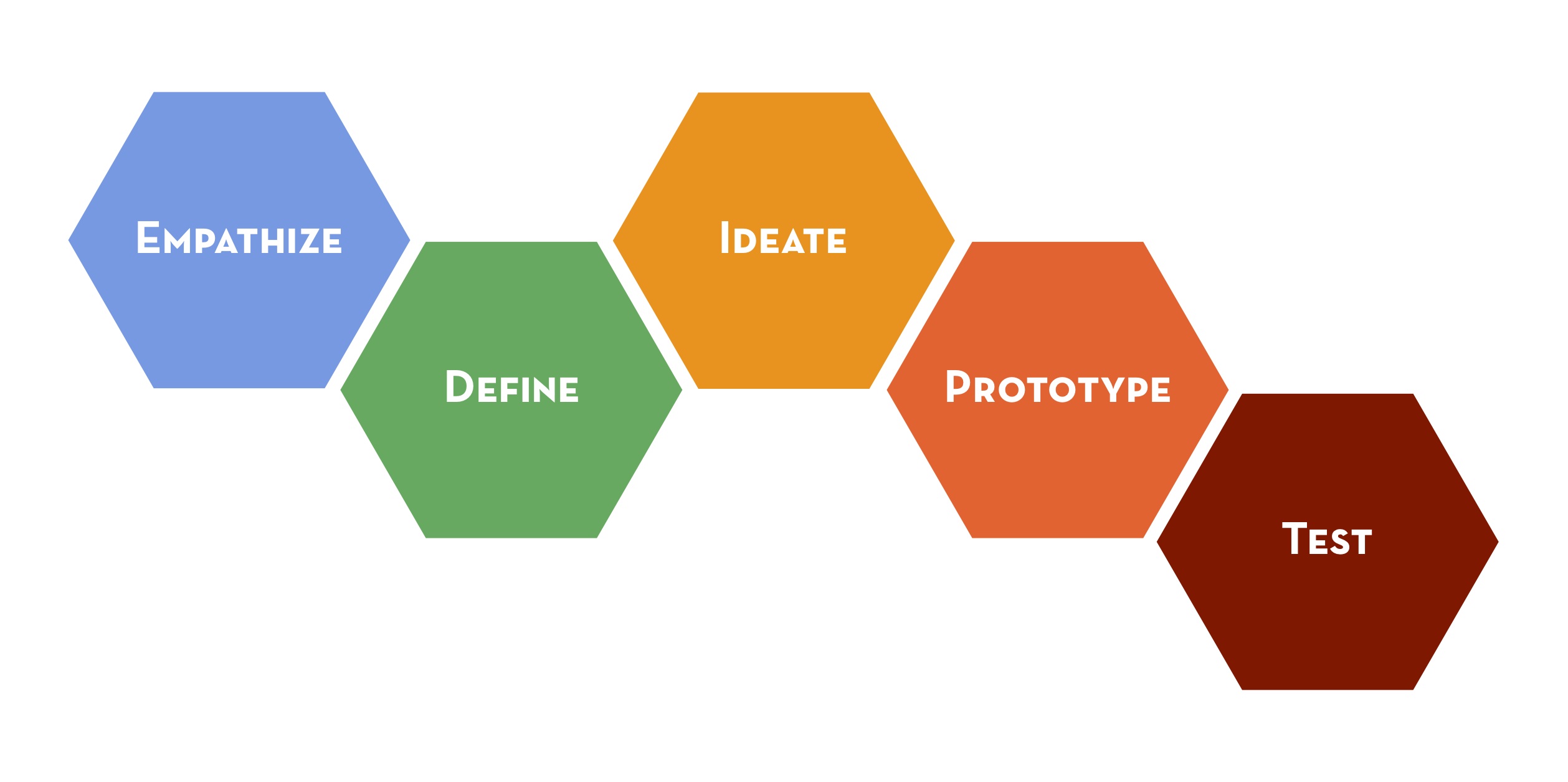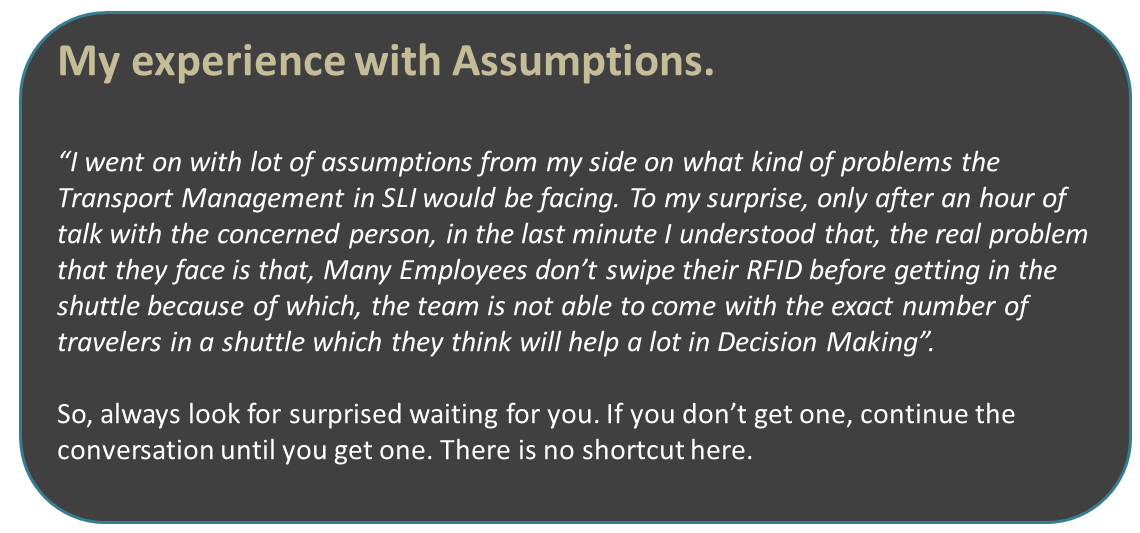
- SAP Community
- Groups
- Interest Groups
- Career Corner
- Blog Posts
- DESIGN THINKING ~ From a Developer's Experience
- Subscribe to RSS Feed
- Mark as New
- Mark as Read
- Bookmark
- Subscribe
- Printer Friendly Page
- Report Inappropriate Content

A year back, I enrolled for an online course ‘Human Computer Interaction’ conducted by Dr.Scott Klemmer of Stanford University and that’s where my relationship started with ‘Design Thinking’. Then, over the period I found it interesting, as I tried applying that approach in my day-to-day activities and I realized, it made sense to what I do in solving the problems. Thought of sharing my experiences with other Developers out here through this blog. Thanks to “Inside SAP Labs”.
Let’s start with the simple definition.

 Whenever a designer designs something, he thinks through a set of steps to provide a solution to the problem given to him. So, the thought processes involved in designing something is the Design Thinking process.
Whenever a designer designs something, he thinks through a set of steps to provide a solution to the problem given to him. So, the thought processes involved in designing something is the Design Thinking process.

It is so simple right?
Only constant thing in this universe is Change. We try out different things in all aspects of our life. When we feel comfortable with one process, we stick to it and when it doesn’t work out, we move to next. Explaining in the same context, in the business/technology context, some proven processes and methodologies that were followed by many and which yielded good results will be easily followed by others in any Industry and it will go viral.

Same Rule applies to Design Thinking. It’s a different perspective of looking at the problem and solving the same which was proven successful in the past and yielded results. I am not going to explain in detail on the types of problems and solutions but in general, solving any type of problem by applying Design Thinking principle.

Below are the Definitions what experts say about it.
Design thinking has come to be defined as combining empathy for the context of a problem, creativity in the generation of insights and solutions, and rationality in analyzing and fitting various solutions to the problem context.

As a developer, from my personal experience I see, Design Thinking as an approach where the underlying problem is given so much importance to collect insights about the same to inspire yourself with actions to come up the solution, keeping the user in the center.

 Let us look at each element in detail with examples and experiences.
Let us look at each element in detail with examples and experiences.

Empathize is the primary element and core of Design Thinking process.Many a times, we confuse empathy relating it to sympathy. Let’s look at it with an example.

Sympathy is just acknowledging for other’s misfortune and providing some comfort but Empathy is to understand other’s feelings by putting yourself in their shoes. It is just to feel that you are going through the same problem what the other person is going through.For few humans, it is a gifted talent to easily empathize with others. No one needs to explain to them to do so but it comes naturally to them.

Empathy is nothing but the below question that every one of us should ask to ourselves.

Now just try it out for yourself and ask below questions keeping customers in mind.
1. How will I feel if I have been charged by my bank with an interest of 1000 more rupees which I am not due for?
How will I feel if the expensive furniture that I bought was not designed as per my expectations?
Once we realize that, the perspective we look at our product/solution won’t be the same again.


Users normally will answer you something different when you ask certain questions directly to them. Especially when it is a closed question, the answer is of no use to your definition phase. We have to frame lot of ‘How?’ and ‘Why?’ type of questions and let the user to talk more about the situation. And we have to frame another question to the answer we receive and the same loop should be repeated until the spark moment where we will realize that, ‘there is a problem’. I call it as the ‘Ah’ moment in Design Thinking.


Another interesting experience was during an interview with the Transport Management Team @ my company.



As I mentioned earlier, the core and primary element of Design Thinking process is the phase of Empathy. Once we are done with that process, we can start defining the problem in concrete manner with the help of data and artifacts, insights from the Empathy phase.
The Define mode is when we unpack and synthesize our empathy findings into needs and insights and scope a specific and meaningful challenge to focus on that one problem which we are going to solve.




Once you’ve formulated a problem statement in the Define mode, then it’s time to think of solutions. The purpose of the “ideate” stage is to generate as many potential solutions as possible, without worrying too much about feasibility. Once you’ve got a good number of solutions on paper, you can then start refining this list by taking into potential commercial or user benefits, business goals, etc.

I strongly recommend coming up with Story Boards and sharing the stories with others, in this stage. Story Boards are effective means to visualize on how our solution would work and to share the same with others to get inputs on different solutions we have in place.
The idea is to come up with many ideas and solutions as they say Design Thinking is all about Divergent Thinking coming up with multiple solutions and later picking the best one.
Though there are some online tools to create story boards, nothing can beat the paper + pencil combo. You can do wonders with it in no time!

By the time, we reach this stage of prototyping, we will be very well aware of the insights from empathy findings, clear problem statement and almost the idea/story board to solve the problem.
All that we have to create a prototype to visualize the solution we have come up with to solve the problem, we identified.

A prototype is worth a thousand words.
Shortening the distance between talking about an idea and prototyping it is key to becoming a successful design thinker. Ideas are of little use if they stay put as ideas. You can only assess their merits when you bring them to life and let others poke at them.

The key point here is that Create and Present the actual working prototype as you are going to build the solution same way. Never include/exclude something in the original design that is deviating from the prototype.

Finally, test your solution with the same set of users you have empathized for in the first stage. Only then, you can be very sure of whether the solution is a successful or a failure one. Actually, this is the learning phase to realize what went right and what went wrong? Show the solution to the customers. Make them use it and observe again. Ask for feedback. Ask for Improvements. Document Everything.
Please be informed that you will find that Customer is not at all happy with the solution you came up with, in some cases.
All that you have to-do is again start Empathizing for him!
Now to summarize the steps for you to apply Design Thinking principles:
Identify the needs.
Observe and Understand More.
Empathize, Empathize, Empathize.
Come up with a problem statement.
Brainstorm and Come up with ideas.
Build Prototypes and Test.
.
Few Interesting Videos i bookmarked related to Design Thinking:
Apple Steve Jobs On Design
Design Thinking With SAP: Utilities - A New Home
Design Thinking With SAP: A Major Greeting Card Company
Thank you for reading my blog and would love to connect with you to hear your experiences too in comments!
Karthik
- SAP Managed Tags:
- Careers
You must be a registered user to add a comment. If you've already registered, sign in. Otherwise, register and sign in.
-
Career Development and Planning (CDP)
1 -
coach's corner
1 -
coaching
1 -
Culture and Diversity
10 -
development
1 -
Employee Experience
17 -
Inspirational Stories
7 -
Learning
1 -
Life at SAP
6 -
Live Sessions
1 -
Purpose and Impact
15 -
SAP Certification
1 -
SAP Learning Class
1 -
Students and Graduates
8 -
Tips and Advice
21